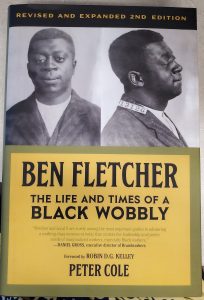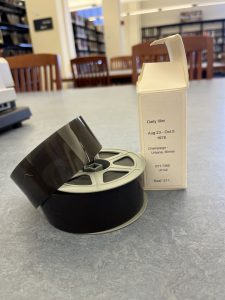AI has been a hot topic around the world lately. And rightfully so. Artificial intelligence is a technological development that we have all heard about and has been rapidly growing for the last decade. It was only a few years ago that my class’s syllabi started including statements on the use of AI for classes as students were continually caught submitting work they had not completed themselves. Since then, AI has become more and more and more integrated into every part of our lives. Most major search engines have AI built in and you cannot expect to interact with social media without seeing some kind of strange, AI generated content. As AI has become an unavoidable part of our day-to-day lives, debates have sprung up in multiple circles about how and when AI should be used.

As a library and information science student I have seen how, regardless of if they are dealing with seasoned researchers, students, or the public, information professionals are seeing more and more people starting to rely on AI as a research tool. In many cases, this can be a detriment to critical research skills and encourage a spread of misinformation as people start to trust the information that AI produces more and more. Although I have been warned to expect misinformation spread by AI and seen it first hand in the form of fake citations and quotes, I know I am not an authority on the subject. So to further inform myself on this issue, I picked up a good ol’ book and got to reading.
For this blog post, I will be engaging primarily with the first part of a new book from our collection, Truth-Seeking in an Age of (Mis)Information Overload (2024) entitled “Misinformation and Artificial Intelligence.” This section is composed of two essays: “It Is Artificial, But Is It Intelligent?” by E. Bruce Pitman and “Disinformation, Power, and the Automation of Judgments: Notes on the Algorithmic Harms to Democracy“ by Ewa Płonowska Ziarek. Continue reading “AI and (Mis)Information: A New Book Review”
 It is hard to believe but it has been five years since the University of Illinois Urbana-Champaign campus essentially closed after spring break. During the spring 2020 semester, spring break was officially from March 14th-22nd but campus did not fully re-open for the rest of the spring semester. Reviewing the Daily Illini, the concerns about Covid-19 before break were primarily about traveling abroad. In March 2020, the Daily Illini was still a physical newspaper and with the closing of campus, its publication was halted from March 15th through June 2020.
It is hard to believe but it has been five years since the University of Illinois Urbana-Champaign campus essentially closed after spring break. During the spring 2020 semester, spring break was officially from March 14th-22nd but campus did not fully re-open for the rest of the spring semester. Reviewing the Daily Illini, the concerns about Covid-19 before break were primarily about traveling abroad. In March 2020, the Daily Illini was still a physical newspaper and with the closing of campus, its publication was halted from March 15th through June 2020.


